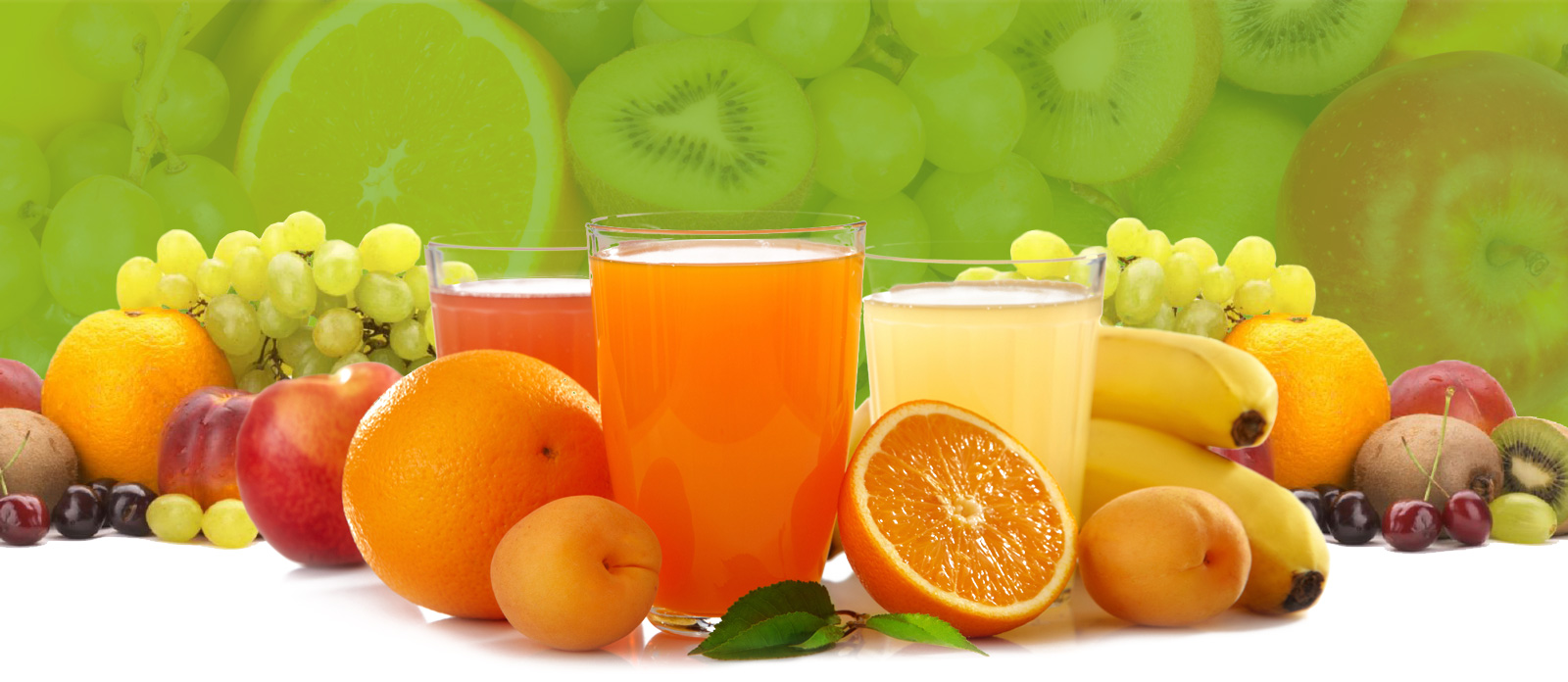When you have pre-diabetes or diabetes, a healthy diabetes meal plan is key to managing your blood sugar. Sometimes it can be tricky to know which foods and drinks are the best choices, but these 10 picks can help keep your numbers in check.
- Beans (Of Any Kind!)
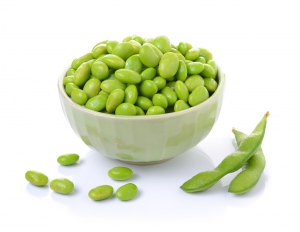
Whether they’re lentils, kidney, chickpea, pinto, black or garbanzo, beans are a low glycemic index food. That means their carbohydrates are gradually released so they’re less likely to cause blood sugar spikes. They’re so beneficial that eating a daily cup of beans for three months as part of a low-glycemic index diet lowered HbA1c by half a percentage point[i].
Try it: Swap your meat burgers with a vegan option using chickpeas or even baked beans for a change.
- Apples
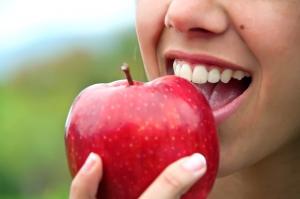 You might think that there’s no room in a diabetic meal plan for fruit, but apples are also low glycemic. Aiming for foods that are low or medium on the glycemic index is one way to manage blood sugar levels. And eating an apple a day has its benefits – they are high in fiber, vitamin C as well as fat-free! Not to mention a portable and easy snack option.
You might think that there’s no room in a diabetic meal plan for fruit, but apples are also low glycemic. Aiming for foods that are low or medium on the glycemic index is one way to manage blood sugar levels. And eating an apple a day has its benefits – they are high in fiber, vitamin C as well as fat-free! Not to mention a portable and easy snack option.
Try it: Toss an apple in your lunch bag or grab one between meals. Bake them and add cinnamon for a warm treat.
- Almonds
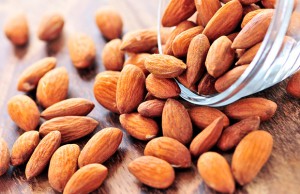 These crunchy nuts are rich in magnesium, a mineral that may help your body use its own insulin more effectively[ii]. Try working more almonds into your diet — one ounce (about 23 whole nuts) supplies nearly 20 percent of your daily dose of this blood sugar-balancing mineral. Plus, nuts like almonds are high in monounsaturated fatty acids, protein, and fiber, which makes them a great way to help manage blood glucose levels.
These crunchy nuts are rich in magnesium, a mineral that may help your body use its own insulin more effectively[ii]. Try working more almonds into your diet — one ounce (about 23 whole nuts) supplies nearly 20 percent of your daily dose of this blood sugar-balancing mineral. Plus, nuts like almonds are high in monounsaturated fatty acids, protein, and fiber, which makes them a great way to help manage blood glucose levels.
Try it: For healthy snacking on-the-go, pack one-ounce portions of almonds into single-serve containers.
- Spinach
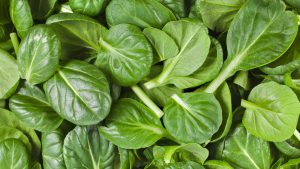 This leafy green has just 21 calories per cooked cup and is filled with blood sugar-friendly magnesium and fiber. Plus, you can enjoy spinach raw, sautéed with olive oil, cooked or even blended, making it a versatile choice too!
This leafy green has just 21 calories per cooked cup and is filled with blood sugar-friendly magnesium and fiber. Plus, you can enjoy spinach raw, sautéed with olive oil, cooked or even blended, making it a versatile choice too!
Try it: Toss a heaping handful of baby spinach into your next smoothie or use it in place of lettuce in a salad.
- Chia Seeds
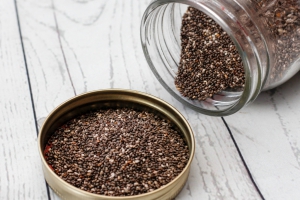 You might have heard that losing or managing weight is one of the best things you can do to improve your blood sugar. Chia seeds can help with that. People with diabetes who added about an ounce of chia seeds to a calorie controlled diet for six months shed four pounds and trimmed an inch-and-a-half from their waistlines[iii]. Aside from being packed with fiber, these gems also contain protein and provide 18 percent of your recommended daily intake of calcium.
You might have heard that losing or managing weight is one of the best things you can do to improve your blood sugar. Chia seeds can help with that. People with diabetes who added about an ounce of chia seeds to a calorie controlled diet for six months shed four pounds and trimmed an inch-and-a-half from their waistlines[iii]. Aside from being packed with fiber, these gems also contain protein and provide 18 percent of your recommended daily intake of calcium.
Try it: Combine a quarter-cup of chia seeds with one cup of one percent or nonfat milk and one-half cup of diced fruit. Refrigerate overnight and enjoy for breakfast the next morning.
- Glucerna
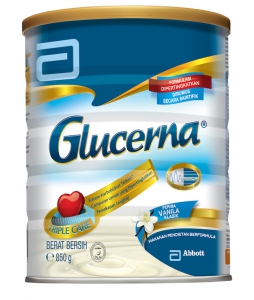 When you’re having a hectic day it can be difficult to eat right. Glucerna is a complete and balanced oral nutrition supplement to help support diabetes management. It contains high levels of fiber to keep you full for longer to prevent overeating during the day. Glucerna can be taken daily as part of a diabetes nutritional management plan.
When you’re having a hectic day it can be difficult to eat right. Glucerna is a complete and balanced oral nutrition supplement to help support diabetes management. It contains high levels of fiber to keep you full for longer to prevent overeating during the day. Glucerna can be taken daily as part of a diabetes nutritional management plan.
Try it: Use Glucerna as a meal replacement to help keep blood sugar under control.
- Blueberries
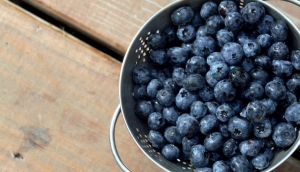
Another fruit option: the evidence of the health benefits of eating blueberries is pretty compelling. Blueberries contain compounds that have been shown to help reduce the risk of heart disease and help improve how your body uses insulin. Eating the equivalent of about two cups of blueberries daily improved insulin sensitivity in overweight people with insulin resistance[iv]. They’re also a great source of fiber and other nutrients such as vitamin C and antioxidants.
Try it: Take a half-cup of fresh blueberries (or defrosted, frozen blueberries) and spoon over plain, unsweetened yogurt. Or add a cup of blueberries to your smoothie.
- Oatmeal
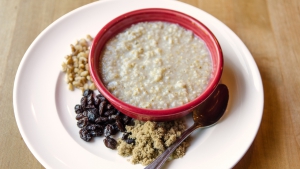
Oatmeal isn’t just good for your heart. It can benefit your blood sugar too. Just like apples, steel cut and rolled oats have a low glycemic index. Just keep in mind that while steel cut and rolled oats are great picks, highly processed instant and quick oats tend to be higher on the glycemic index so they’re not as blood sugar-friendly.
Try it: Opt for steel or rolled oats cooked oatmeal with blueberries for a hearty, hot breakfast.
- Turmeric
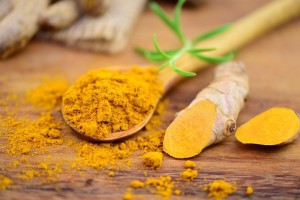
This golden spice contains curcumin, a substance that may keep your pancreas healthy and prevent pre-diabetes from turning into Type 2 diabetes. How well does it work? When researchers gave participants who had pre-diabetes 1500 mg of a curcumin supplement daily or a placebo for nine months, 16 percent of people in the placebo group went on to become diabetic, while the entire curcumin group remained diabetes free. Turmeric can help improve how the body can improve its sensitivity to insulin[v].
Try it: Curry powder is filled with turmeric. Sprinkle some into your next veggie stir-fry for a curcumin kick or talk to a health care professional about using a supplement.
- Chamomile Tea
 Chamomile tea has long been used for a variety of ailments. It has antioxidant and anticancer properties, and has been found that it may help you manage your blood sugar levels as well. Drinking one cup of chamomile tea after meals three times per day for six weeks can result in a reduction in blood sugar levels, and improve insulin production and insulin resistance[vi].
Chamomile tea has long been used for a variety of ailments. It has antioxidant and anticancer properties, and has been found that it may help you manage your blood sugar levels as well. Drinking one cup of chamomile tea after meals three times per day for six weeks can result in a reduction in blood sugar levels, and improve insulin production and insulin resistance[vi].
Try it: Replace your usual night cap with a freshly brewed cup of chamomile tea. Try adding a slice of lemon for flavor and an extra dose of vitamin C.
With these tasty foods and drinks, better blood sugar management is in the bag!
[i] Jenkins DJ, Kendall CW, Augustin LS. Effect of legumes as part of a low glycemic index diet on glycemic control and cardiovascular risk factors in type 2 diabetes mellitus: A randomized controlled trial. Available from https://www.ncbi.nlm.nih.gov/pubmed/23089999. Last accessed November 9 2018.
[ii]Kieboom BCT, Ligthart S, Dehghan A, et al. Serum magnesium and the risk of prediabetes: A population-based cohort study. Available fromhttps://www.ncbi.nlm.nih.gov/pubmed/28224192. Last accessed November 9 2018.
[iii] Vuksan V, Jenkins AL, Brissette C. Salba-chia (Salvia hispanica L.) in the treatment of overweight and obese patients with type 2 diabetes: A double-blind randomized controlled trial. Available from https://www.ncbi.nlm.nih.gov/pubmed/2808908. Last accessed November 9 2018.
[iv] Stull AJ, Cash KC, Johnson WD. Bioactives in blueberries improve insulin sensitivity in obese, insulin-resistant men and women. Available fromhttps://www.ncbi.nlm.nih.gov/pubmed/20724487. Last accessed November 9 2018.
[v] Chuengsamarn S, Rattanamongkolgul S ,Luechapudiporn R, et al. Curcumin extract for prevention of type 2 diabetes. Available from https://www.ncbi.nlm.nih.gov/pmc/articles/PMC3476912/. Last accessed November 9 2018.
[vi] Zemestani M, Rafraf M, Asghari-Jafarabadi M. Chamomile tea improves glycemic indices and antioxidants status in patients with type 2 diabetes mellitus. Available from https://www.ncbi.nlm.nih.gov/pubmed/26437613. Last accessed November 9 2018.
Source: Article contributed by Abbott.
Featured Image: fruitsmoothierecipe.net
Read also: What is Healthy Aging According to 2018 Asia Pacific Healthy Aging Survey?

